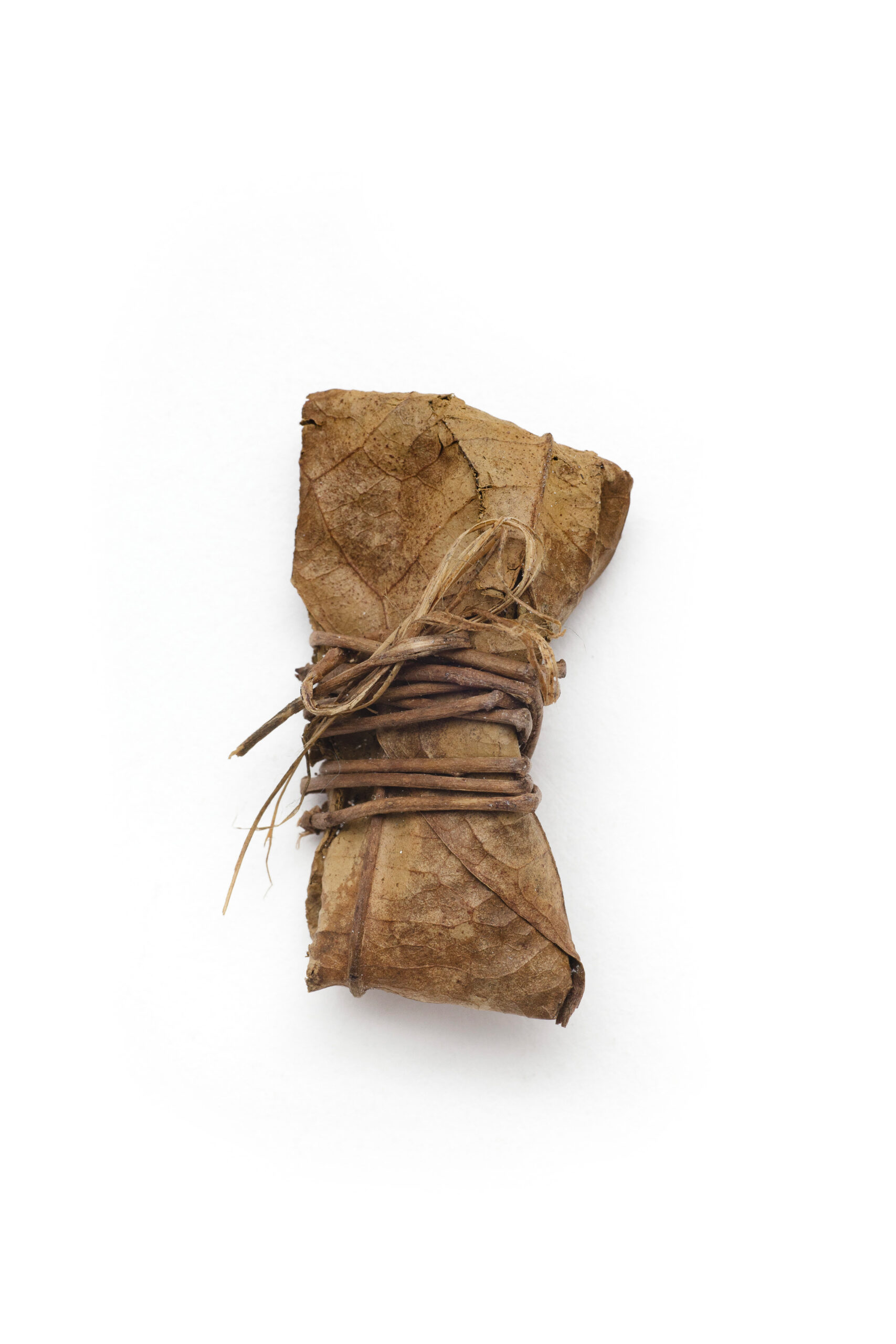MATERIALS: Leaves (Arumã, Bananeira or other), vines and other materials available in nature.
TECHNIQUE: Large and resistant leaves are simply folded creating wraps and can be tied or pinned to create a better structure.
USE: To isolate. This isolation can avoid the smell or touch, or serve for facilitating transportation, storage, cooking, etc.
Packaging
-
PACKAGING
These selected packages are wraps made of leaves, vines and other materials available in nature, without any kind of processing. Some of the most common materials are Arumã leaves, dried leaves and Bananeira leaves, which are simply folded and can be tied or pinned to create a better structure.
These natural packages take advantage of the properties of a certain material to isolate and store another item. This isolation can be merely visual, or also to avoid the smell or touch, and can serve for various other purposes, from facilitating transportation to avoiding the dispersion of a powder. Wraps are also used in cooking: it can be used to conserve things, to impart a special flavor to dishes through smoking, and can even serve as a plate.
The habit of using natural materials as packaging is disappearing in the Amazon region. For example, fresh meat was formerly wrapped in sheets of Arumã leaves in the markets, but today is being wrapped in newspapers or even plastic bags.
-
-

Wrapping and structure being created from natural materials in the forest in order to make cooking viable without a pan.
-

The final package that serves as pan.
-

Arumã leaf drawing from the Flora Brasiliensis’ book.
-

-

Natural soaps are sold wrapped in Arumã leaves in an old-fashioned herb store in Belém.
-

Fish cooked inside a leafy package to gain a special taste.
-

Bananeira leaves are the most commonly used for cooking.
-



